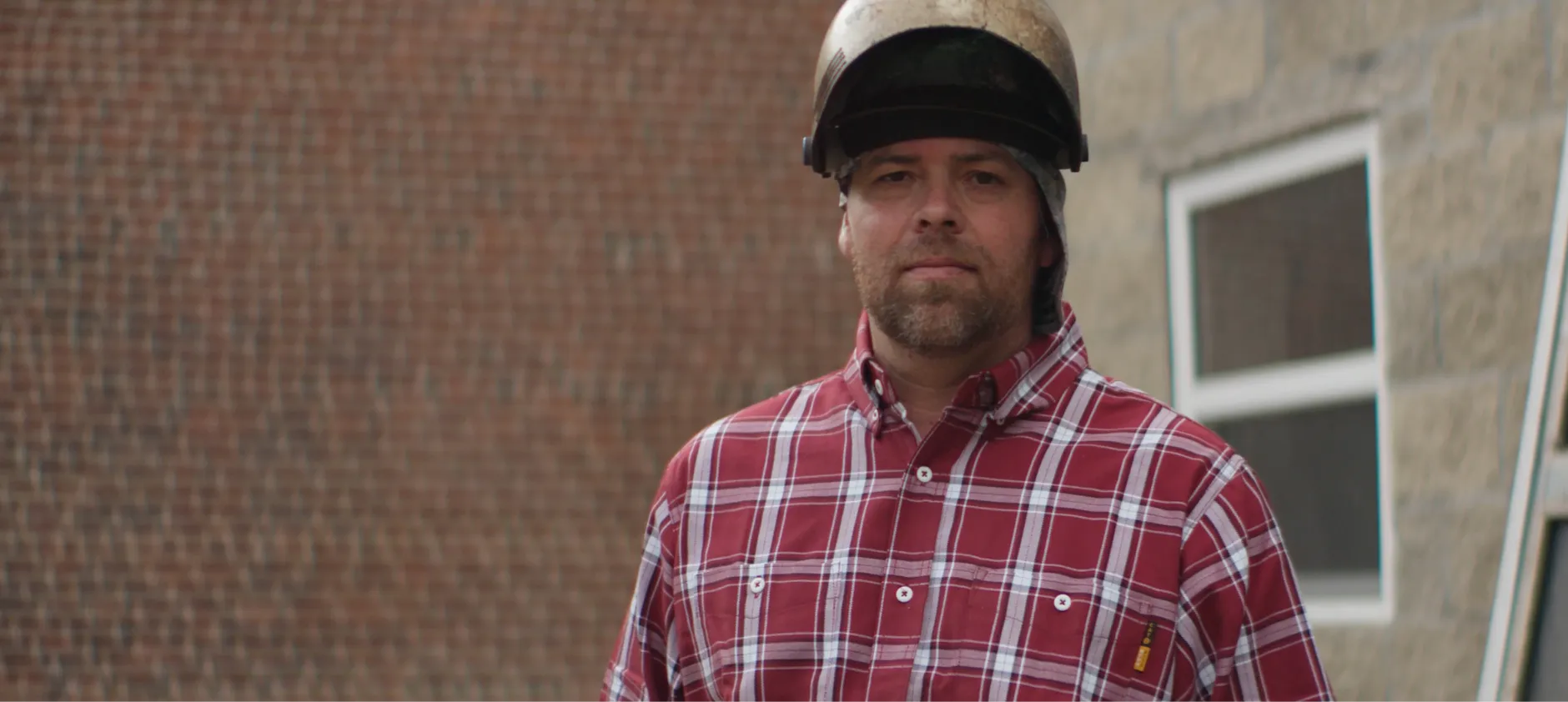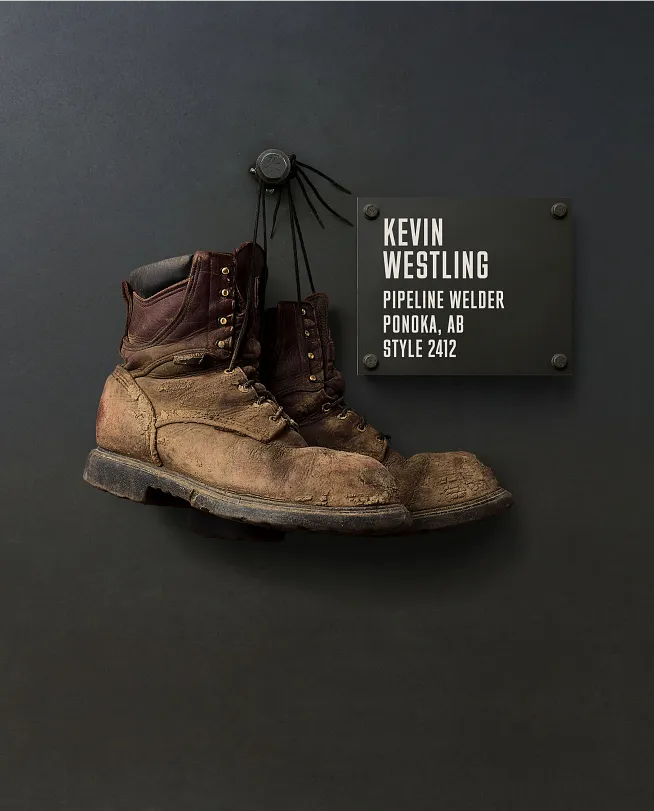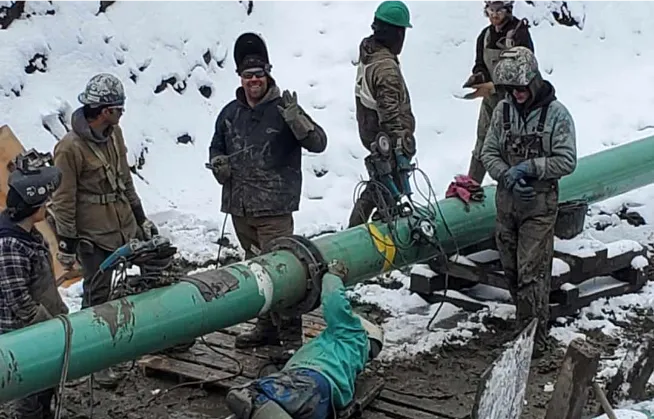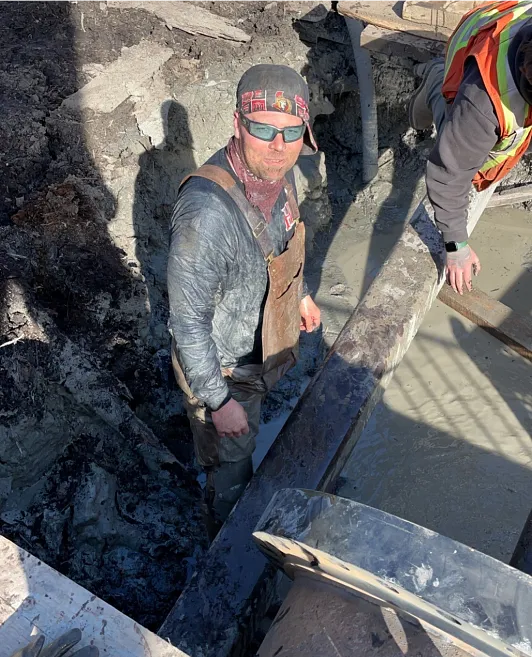Kevin Westling
Style #2412, Ponoka, AB, Canada

Kevin Westling video
Kevin Westling
Pipeline Welder
I've spent the better part of my life working the pipelines, mostly in the remote areas of Alberta, Canada. The trade is demanding in more ways than one, but I’ve been dedicated to it for as long as I can remember. People might call me a folk legend, because I’m one of the fastest welders around, but really I'm just a guy who's put in the work, day in and day out, to make sure I get the job done right.



Pipeline welding isn’t for everyone. The work takes you far from home, sometimes for up to two years at a stretch.
You're on the job 24 days straight, with maybe two or three days off before you're back at it again. It's tough being away from family for that long, but it's the sacrifice we make to provide for the ones we love. The support from the people working beside me certainly makes it easier. The comradery we build on the line working as a team, knowing that everyone has your back—it keeps the job gratifying.
Before you can even set foot on a jobsite, you have to pass the B-pressure test which measures both the quality and speed of your welds. It determines what you'll be paid—or if you'll get paid at all. The stakes are high; your livelihood depends on it. And it's not just about the technique; you need the physical endurance to work in tight spaces, carry heavy equipment, and push through fatigue. Rain or shine, snow or heat, my Red Wings have seen it all. I’ve stood in four feet of icy water in the spring, welding for hours on end, feeling the cold seep into my bones. And when winter rolls in with -40°C temperatures, I'm out there for 12-hour shifts, pushing through the biting cold, knowing I'll be back at it the next day, and the day after that, for weeks at a time.
I’m just a welder who did his job, and if that’s what people remember, then that’s more than enough for me.
KEVIN WESTLING
Over the years, I've had the privilege of mentoring the next generation of welders. I'm especially proud to work with the young women coming into the trade. It's important that they learn to take pride in their work, to do it right, and to understand that they have just as much of a place here as anyone else. I've seen a lot of apprentices come and go, but the ones who stick with it, who put in the effort, they make it all worthwhile.
Welding has been a family affair for us. My father, brothers, and nephews have all worked the line or drilling rigs, and I'm proud to be part of that legacy. Most guys in this line of work retire from pipeline welding by the time they hit 45 or 50. I've been at this a long time, and I know that day is coming for me too. When it does, I'll hang up my stinger knowing I did the best I could.
When I think back on all the years, the people I've worked with, and the jobs I've been part of, I'm grateful for the life this trade has given me. I never set out to be a legend or to leave some great mark. I just wanted to do right by my family, to teach those coming up behind me, and to take pride in the work I’ve done. In the end, I’m just a welder who did his job, and if that’s what people remember, then that's more than enough for me.
There's a story worn into every pair of Red Wings.
We want to hear yours.
Each year, Red Wing is proud to induct new honorees to the Wall of Honor in order to permanently preserve, share and respect their lifetime of work. Nominate a co-worker, family member or yourself for the Red Wing Shoes Wall of Honor.
